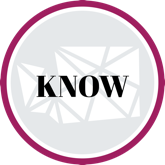
Summary...
- An organization’s internal controls monitor, measure, and direct against risk and fraud. Established written policies and procedures guide behaviors and outcomes and should be periodically reviewed to ensure everything is in order.
- Set clear separation of duties that ensure no one person is able to initiate, approve, record, and reconcile a transaction. At minimum, two people are involved in financial functions and tasks, while a stronger practice is to separate duties across at least three people.
- Safeguards should be in place to identify possible fraud as well as ways to keep the organization and its participants from committing fraud.
- Board members are responsible for fulfilling three fiduciary duties: Duty of Care, Duty of Loyalty, and Duty of Obedience.

Here are some questions to think about...
- Does your nonprofit have any financial oversight concerns that could negatively affect the organization’s work or reputation in the community?
- Is your nonprofit performing a regular risk assessment that includes considerations for business, operational, and fraud risks? For the nonprofit’s size and complexity, is your risk assessment approach lacking, too much, or just right?

Next steps...
- Assess your organization’s overall accountability and internal controls by completing Jacobson Jarvis & Co.’s two easy tools in their resource Ten Minutes Is All It Takes to Review Internal Controls.
- Explore the following resources on controls for small nonprofits. Identify 2-3 actions your nonprofit can take to strengthen your internal controls.
- Blue Avocado – Five Internal Controls for Very Small Nonprofits
- “Controls” for Small Nonprofit Organizations: A Guide for Board Members by Putnam Barber & Robert Fleming
- Review the National Council of Nonprofits Financial Management page, which includes information on basic financial policies, financial literacy resources, and practice pointers.
Chapter Materials
Start by downloading the Finance Unlocked for Nonprofits guide that includes practice activities, worksheets, and ...
Download this chapter's guide before watching the video.
Video transcript with visual descriptions for the Finance Unlocked for Nonprofits Oversight video
Sample Conflict of Interest Policy from Montana Nonprofit Association
Document Retention Policy from resources from National Council of Nonprofits
Sample Whistleblower Policy from Charity Review Council
Use this worksheet to map out separation of financial duties at your organization.
Use this checklist to assess areas of financial oversight in your organization.
This activity will help you assess the financial culture in your workplace.